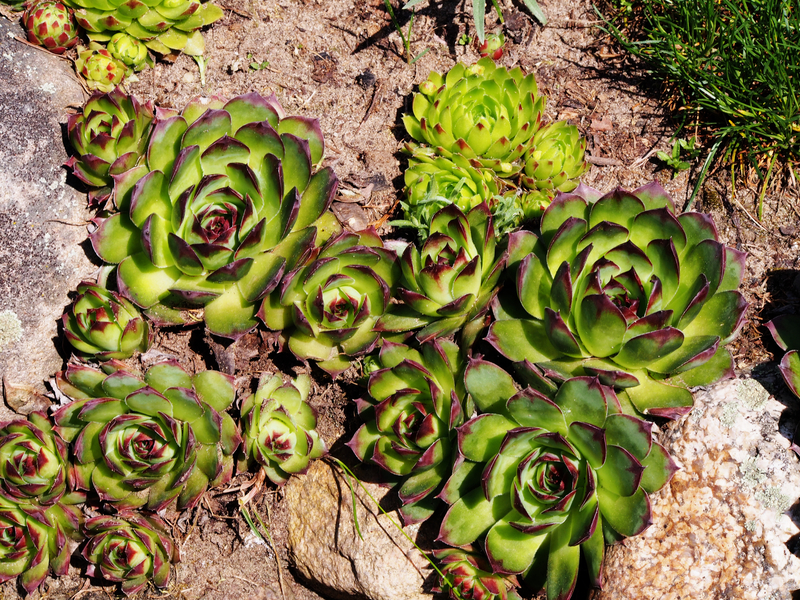Simple Steps to Healthy Orchids
Posted on 22/06/2025
Simple Steps to Healthy Orchids: Your Ultimate Guide
Orchids - with their dazzling variety and exotic blooms - have captivated plant lovers for centuries. They may have a reputation for being fussy or difficult to care for, but in reality, maintaining healthy orchids is well within reach for both beginners and experienced growers. With the right knowledge and a few simple steps, you can enjoy vibrant, blooming orchids throughout the year. This comprehensive guide will walk you through everything you need to know about nurturing these fascinating plants, ensuring your orchids stay healthy and stunning.
Why Choose Orchids?
Before learning the steps to healthy orchids, it's worth noting why these flowers are such rewarding houseplants:
- Diverse and Stunning Blooms: There are over 25,000 orchid species worldwide, offering endless colors, shapes, and sizes.
- Long-lasting Flowers: Healthy orchids can bloom for several weeks or even months.
- Air Purifying: Orchids can contribute to cleaner indoor air, creating a fresher home environment.
- Low Allergen: Their pollen remains largely contained, making orchids a safe choice for allergy-prone individuals.
Now, let's dive into the essential steps for beautiful, healthy orchids.

1. Understand Your Orchid's Needs
Recognize Your Orchid Type
The first step to growing healthy orchids is knowing your plant's type. The most popular home orchids are Phalaenopsis (moth orchids), Dendrobium, and Cattleya. Each has slightly different care requirements:
- Phalaenopsis: Tolerant of indoor conditions; great for beginners.
- Dendrobium: Prefer brighter light and less frequent watering.
- Cattleya: Enjoy more direct sun and have large, fragrant blooms.
Know Their Natural Habitat
Most common orchids are epiphytic, meaning they grow on trees rather than in soil. They are used to humid, breezy, and shady environments. This insight will shape how you care for your orchid at home.
2. Provide Proper Light for Orchids
Light is a critical factor for orchid health:
- Indirect, Bright Light: Place orchids near windows with filtered sunlight - east or south-facing spots are ideal.
- Avoid Direct Sun: Too much sun can scorch orchid leaves, causing yellowing and spots.
- Recognize Light Signs: Healthy orchid leaves are bright green. Dark green means too little light, while yellowish leaves signal too much.
Tips for Indoor Lighting
If natural light is insufficient, use grow lights or LED lamps to ensure your orchids thrive year-round.
3. Master Orchid Watering
Watering orchids can be tricky, as both overwatering and underwatering are leading causes of plant stress. Here are simple steps to healthy orchid watering:
- Check the Media: Only water when the potting medium feels nearly dry but not crispy. Stick your finger an inch deep or use a wooden skewer.
- Use the Right Method: Water thoroughly, allowing excess to drain out. Never let orchids sit in standing water.
- Frequency: Typically, once a week is enough, but this depends on season, humidity, and potting mix.
- Water Quality: Orchids prefer rainwater or filtered water to avoid salt buildup from tap water.
Tip: In general, it's better to underwater than overwater orchids!
4. Perfect Your Orchid's Environment
Essential Humidity for Healthy Orchids
Orchids thrive in humidity levels of 40-70%:
- Use a Humidity Tray: Set your orchid pot above water-filled pebbles.
- Mist Regularly: Lightly mist leaves in the morning, avoiding flowers and crown rot.
- Group Plants: Grouping orchids together increases surrounding humidity.
Optimal Temperature
Most indoor orchids prefer day temperatures between 65-80?F (18-27?C) and nighttime drops of about 10?F (5?C). Avoid exposure to cold drafts or extreme heat from radiators.
Air Circulation
Good airflow is crucial for healthy orchids to prevent pests and rot. Use an oscillating fan on low setting nearby, especially in humid rooms.
5. Choose the Right Orchid Potting Mix and Container
Orchids do not grow in regular potting soil. Instead, select a specialized orchid bark mix or sphagnum moss, which mimics their natural environment and provides necessary drainage.
- Repot Every 1-2 Years: This prevents root rot and keeps the potting medium fresh. Healthy orchid roots are firm and white/green.
- Orchid Pots: Transparent pots are ideal to monitor root health and ensure roots receive some light.
If you spot mushy or blackened roots when repotting, trim them off with sterile scissors before replanting.
6. Fertilize for Vibrant Blooms
Feeding orchids helps promote lush foliage and abundant flowers. Use a balanced, water-soluble orchid fertilizer (20-20-20 NPK or similar) at half the recommended strength:
- Frequency: Once a month during active growth; less in winter.
- Flush the Pot: Every few months, water thoroughly to wash away accumulated salts.
- Avoid Over-fertilizing: Excess fertilizer can damage roots and reduce vigor.
7. Pruning and Deadheading Orchids
Removing spent blooms and old flower spikes encourages new growth and healthier orchids:
- After Blooming: Cut back Phalaenopsis flower spikes just above a node to stimulate reblooming, or trim to the base if it turns brown.
- Remove Dead Leaves: This prevents rot and disease.
- Sterilize Your Tools: Always use sanitized scissors to reduce infection risk.
Regular pruning keeps your orchid tidy and encourages more robust growth cycles.
8. Identify and Prevent Orchid Pests and Diseases
Even the healthiest orchids can become targets for pests and fungal attacks. Vigilance and immediate action are key:
- Common Pests: Mealybugs, aphids, spider mites, and scale insects often hide on leaves and roots. Wipe with a damp cloth or treat with insecticidal soap as needed.
- Disease Prevention: Root rot and leaf spots are usually due to overwatering and poor airflow. Separate infected plants and adjust care immediately.
- Inspect Regularly: Check leaves and roots every week for early signs of trouble.
Healthy orchids rarely succumb to problems - prevention is always the best cure!
9. Understanding Orchid Dormancy
Some varieties, such as Dendrobiums, go through a rest period or dormancy after blooming. During this natural phase, reduce watering and stop fertilizing until new shoots appear.
- Don't Panic! Your orchid isn't dead - just resting and conserving energy for the next exciting bloom.
10. Simple Troubleshooting for Common Orchid Problems
Don't worry if your orchids show signs of stress. Use these quick fixes:
- Wilting or Wrinkled Leaves: Likely underwatered or root rot. Check roots and adjust watering routine.
- No Blooms: Increase light, check fertilization, and ensure it's not a dormancy phase.
- Spots or Mold: Improve air circulation, reduce watering, and remove any affected parts.
With patience and the right interventions, most orchid problems are easily reversible.

Frequently Asked Questions About Healthy Orchids
How do I keep my orchids happy?
With proper light, careful watering, and attention to environment and feeding, your orchids will thrive and bloom.
How often should I water my orchid?
Weekly is typical, but always check to see if the potting medium is dry before watering again.
Why won't my orchid bloom?
Insufficient light or a dormant phase are common reasons. Adjust placement and be patient; blooms often return with correct care.
Can I grow orchids outdoors?
In tropical climates, many orchid species thrive outdoors. In seasonal climates, move them outside during warm, humid months, but bring indoors before the temperature drops below 50?F (10?C).
Conclusion: Growing Healthy Orchids Is Simple!
Anyone can cultivate beautiful, healthy orchids with just a few easy guidelines. By understanding your plant's needs and following these simple steps to healthy orchids, you'll be rewarded with impressive blooms and lush foliage year after year. Whether you're expanding a collection or just getting started, let your orchid journey be filled with growth, learning, and the unique joy these extraordinary flowers bring to your space.
Ready to grow your own healthy orchid? Start today by observing your plant's environment, refining your care routine, and celebrating every new leaf and bloom as a sign of happiness and health!

